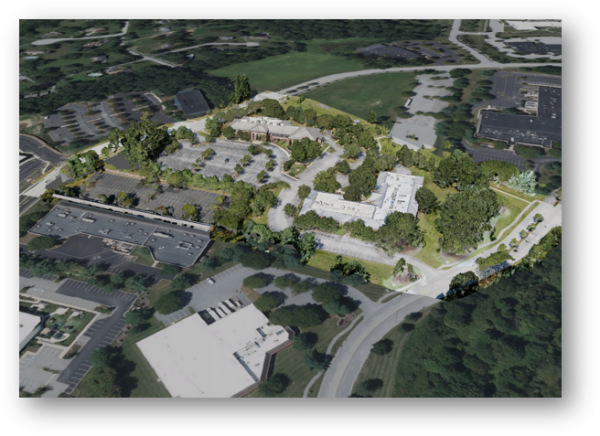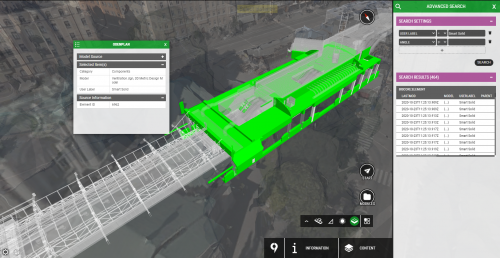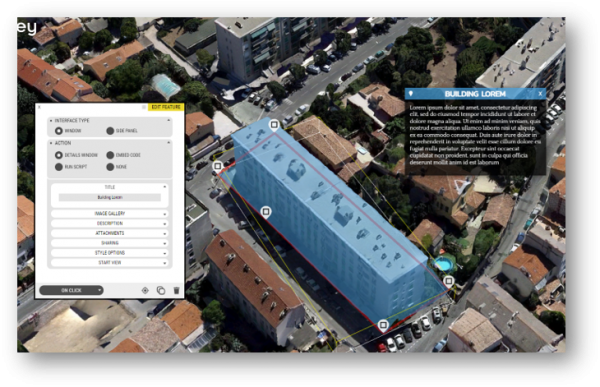This month’s newsletter features our latest Updates and OpenCities news! Find the link to our upcoming Webinar that will take place on June 8th and get a glimpse of interesting upcoming features!
OpenCities Planner Newsletter, May 2022
Upcoming OpenCities Planner Users Live webinar
On June 8th we are holding a Live OpenCities Webinar event on our Latest Updates and News! The webinar session will be broadcasted at 09:30 CET, followed by Q&A.
Mark your calendar to get updated on our exciting new and upcoming product features and releases, and new interesting functionalities in real-world use-cases. To join us, register here: OpenCities Live Webinar, June 8th
What’s new?
3DTiles reality data and web-ready scalable meshes from ContextShare
OpenCities Planner has now an improved integration with ContextShare. Users can access 3D tiles reality data and web-ready scalable meshes from ContextShare through our Data Manager and configure them as Reality models. The data is easily accessible from ContextShare, without the need of copying them, providing an additional improved performance.

Redesign of the Attribute window
This new design of the Attributes window improves the user experience, as well as providing better filtering possibilities for the Admin users of OpenCities Planner.
Filtering on the attributes coming from either a Spatial source or iModel, can be done by filtering on the attribute group level or specific attributes. The benefits here are that it increases attributes’ readability, information appears structured, and the user can curate the visual outcome of the groups of properties.

Search & Query improvements
The OpenCities team is progressively developing the implementation of a user-friendly Search and Query tool. Additional advancements taken place lately, include friendly labels, case-insensitive search, zoom extends to cover all search hit results, graphical adjustments and enhancements, along with an automatic attributes list filtering helping users to create good searches.
The Search and Query tool is under working process so it is currently available as a hidden feature and can be enabled with Java scripting after the user’s request.

Choose which iModel to upload into
With this new workflow, you can make new versions of an iModel. The iModel you have selected will become the default one for the next upload you do.
This enables updating your iModels without the need to reconfigure them whenever you wish to add more data to them.

Draw Tools
With our new Draw tools you can now draw Polygon and Line features in the Editor. Quick sketching and annotation are enabled, providing a simplified workflow for simple vector additions to your project.

TerraForm Improvements
These latest improvements in our TerraForm tool provide better rendering of the control points of the TerraForm shape. You can also easily modify nodes after creating them, by clicking the line to add a new one or choose ALT + Click to remove one.
This offers better control to the user and it reduces the need to re-draw a polygon from scratch when editing.

ShowRoom Updates
We have been developing a new version of the ShowRoom application, which will support iModels and be consistent with the online version of OpenCities at all times.
It supports local map datasets, but project content such as POIs, uploaded 3D-models and iModels, and GIS-services such as WMS will require an active internet connection. As reality models and background data typically hold the most heavy content for a project, the ShowRoom application will offer increased performance over the online version for exhibitions and situations where the internet access is unstable. It also features a brand new user-friendly GUI. An Alpha version has been released to pilot users for review and feedback.

Unit per pixels for Reality Models
Introducing you the Unit Per Pixel (UPP) feature, an advanced visualization setting that allows you to control what data is being rendered. The Unit Per Pixel setting offers a better control of Reality model rendering where the default Unit Per Pixel calculation is non-optimal.
This new Unit Per Pixel is aimed to be used for advanced situations if there is need to tweak your mesh model to either look better or load faster.
You can read more here: Unit per pixels for Reality Models


Nominate your own OpenCities project!
Do you have an OpenCities project that you want to share with us and the rest of our users?
Have you been working on something noticeable and worth mentioning?
You can always submit your entry to us, and get a slot to present your work during one of our Live Webinar sessions!
Send us your submissions here: Dorothea.Manou@bentley.com
Stay connected with us!
Sign up and have our OpenCities Planner Users’ Newsletter delivered right to your inbox! Subscribe here
Need more? Access our Blog and read all our latest Posts or visit our Forum to share or access OpenCities-related issues, advice, tips, and more.
And as always…send us a Support ticket with your question, suggestion, or to report a bug!